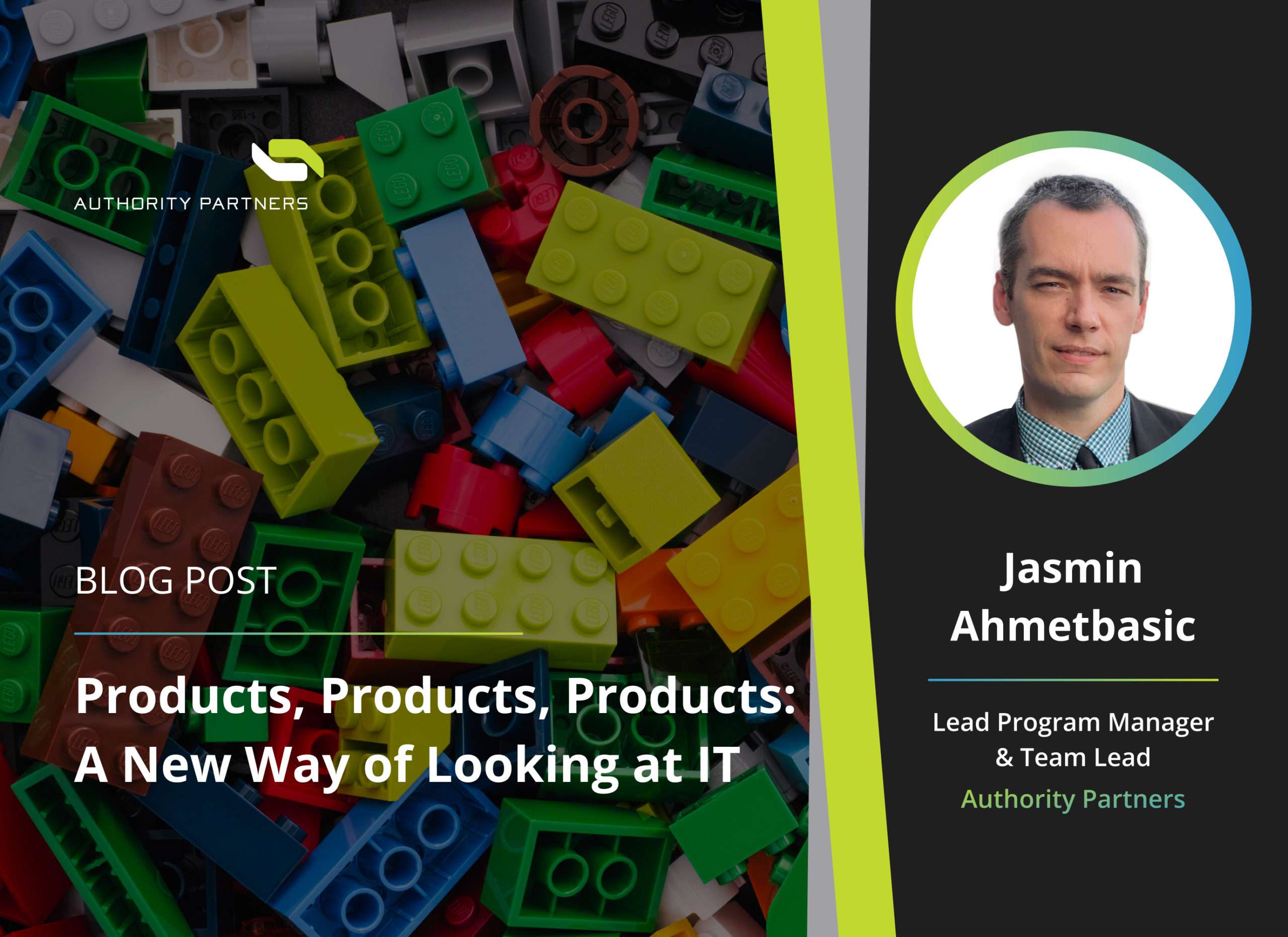
Products, Products, Products: A New Way of Looking at IT
Jasmin Ahmetbasic, Lead Program Manager & Team Lead @ Authority Partners
Software companies have changed dramatically since SAP first appeared on the scene in 1972. Shortly after, in 1975, a then-small concern called Microsoft opened its doors and the software development business landscape – not to mention the world at large – has never been the same.
Though the tools and techniques used have evolved over the decades since, the basic process of software development remains largely the same: analysis of requirements followed by design architecture, then the coding, testing, deployment, and ultimately maintenance and support. Recently, however, there has been a shift in management focus, moving beyond projects to embrace product management.
Since they often work by augmenting staff resources at other companies, modern software development companies usually spend the majority of their focus on the nitty-gritty of development, dealing with task after task, project after project. That focus is by no means a bad thing: it takes concentration to deliver quality results. But it can lead to the lack of awareness of potential future opportunities. That’s where product management comes in.
When you do the work you’re assigned, you’re not thinking outside the box. You need to think deeply about the product you are helping to create. What is the solution you’re building? Where does it fit in the overall picture – meaning the IT market and even market as a whole, tailored by the client’s business model? This kind of big-picture thinking requires a new, product-focused mindset, and a product management approach. Product management is basically the facts industry.
The best way to attain a product mindset is to concentrate on the product as a whole, even when discussing specific IT development aspects. It’s an attitude that has to start at the top, but should permeate every level of a company’s organizational structure. Projects and programs have set timeframes, but the product perspective persists long after any deliverables have been released. If you are delivering constantly, you are always focusing on the output. But with a product mindset, you’re not just giving the output, you’re giving the outcome.
I love to use LEGO as a metaphor. Your box might contain the pieces and instructions for a truck. When you assemble that truck, it’s a project. But the truck is actually part of a whole LEGO city. It can combine with this kit here, or be transformed into another element over there: it can constantly be remade in new and different ways. That’s the product mindset we need to apply to the IT function.
Obviously, when the product under discussion is a solution specifically built for a client, the specifics of the build are not shared. But I encourage a product mindset for better utilization of your own resources, for better motivation, and even improved staff retention, as well as an increased client focus. The wide lens of a product mindset allows IT deliverables to be perceived as tangible, having weight and presence in the world. That tangibility creates attachment, which plays a significant role in employee engagement.
The shift to a product mindset is not instead of but complementary to an organization’s usual project management practices. The product manager is like the CEO for that specific product; for example, there might be five versions of a product over the next year. Each of those versions will have a project manager overseeing software development, quality assurance, daily tasks and so on. The job of the CEO, however, is to think about all the ramifications of the product, and to plan the roadmap. To ensure the overall process runs smoothly, that each version leads to the next and to anticipate evolutions to come. During this process, one of the key drivers is the client’s feedback, and when measured by the economy of scale and we see that multiple clients have feedback and ideas on this path, the benefits multiply for both sides.
Product management empowers a software development company to enter a broader world. It’s important to note that most software development companies function in a consultancy role, which is valuable, but not enough. If you want to step up the game and bring additional value to clients in the enterprise world, you need to bring product with you, packaged and perfect, and say “This will change the way you work.” A product mindset is the way to get here.
Adopting a product mindset and taking a product management approach doesn’t mean moving away from core software development. Instead, it means creating a connection between core development and mass users that goes beyond the initial imperative, across industries and business, bringing all your efforts forward into the future.
To learn more about how we can help your business, please reach out to us here or via email at hello@authoritypartners.com.